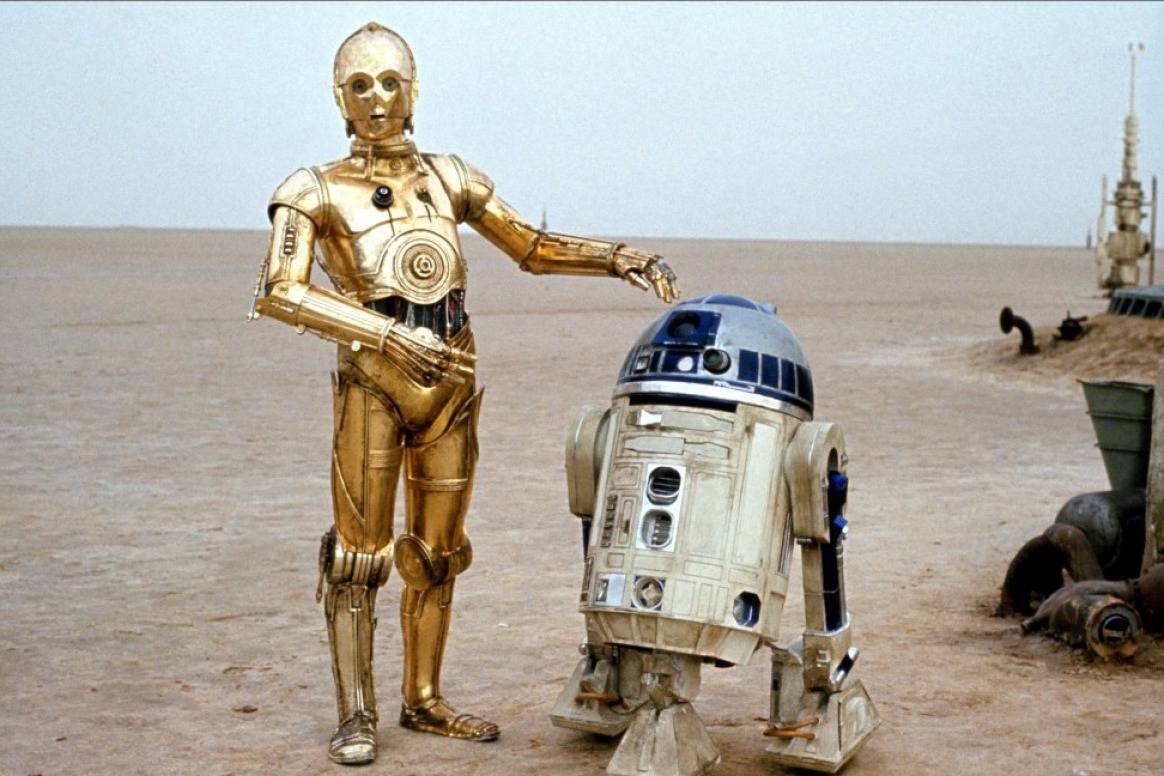Storytelling
The Storytelling Strategy That BuzzFeed and Star Wars Have in Common
We would have never gotten Star Wars if the Modesto, California, police weren’t so good at their job. Or if George Lucas wasn’t such a reckless driver.
Before he became a filmmaker and the beloved creator of Star Wars, Lucas wanted to be a fighter pilot in the U.S. Air Force. But they wouldn’t let him in because he had too many speeding tickets.
His backup plan was film school. And thus, after a decade of work and innumerable headaches, we got Star Wars—a story that every person on Earth has heard about. (In his book How Star Wars Conquered the Universe, author Chris Taylor visited all sorts of remote tribes attempting to find an adult human being who had not in some way been affected by Star Wars–and couldn’t find even one!)
Star Wars has something for everyone. Even if you happen to be a horrible person (or, you know, just not that into sci-fi) and dislike Star Wars, it still has at least one thing for you—a template for what we have dubbed The Four Elements of Great Stories.
Element 1: Relatability
There’s something innately human and entertaining about the Star Wars adventures, but if you want to truly understand what made the first film so popular, you need to appreciate the culture in which it came to life.
During the 1970s, America was fresh off its big victory over Russia in the race to land on the moon. It was also an unsettling time in the world with the Vietnam War, civil unrest, and a lot of bad disco music. Americans were nostalgic for “the good ol’ days” of carefree 1950s culture, muscle cars, and skinny Elvis.
George Lucas was a big fan of 1950s car culture and nostalgic Americana. When you look at the original trilogy of Star Wars film, his love of fast, roaring mechanical machines rips through the screen. And so does his love for a few other things, including comic books, kung fu movies, and old Buck Rogers science-fiction adventures.
Lucas took everything he loved—the same things that 1970s America loved—and mashed them together to make Star Wars. The mask that Darth Vader wears was modeled after a kung fu helmet, and his stormtroopers were inspired by a kung fu army. The speeders looked like muscle cars, and the spaceships resembled something NASA might soon build. The costumes could’ve been from Buck Rogers, and the storyline was taken straight from Joseph Campbell’s concept of the hero’s journey.
In other words, Star Wars is a universe constructed with a combination of a whole bunch of familiar things. Even though the movies were about space creatures living a long time ago in a galaxy far, far away, they captured the first and perhaps most important element of great stories: relatability.
Our brains are averse to anything too foreign. It’s hard to get comfortable enough to invest in a story that is too out there, which is why we are fascinated by stories we can relate to. Basically, we’re a giant planet of narcissists.
In a galaxy far far away…
For us to accept the unfamiliar parts of Star Wars—like a space bar filled with aliens brawling—we need some familiar elements to get us comfortable and make us care. And the more relatable a story is, the more likely we are to get pulled in.
BuzzFeed, for example, has managed to capture the attention of millions of people through stories by specifically playing on our love of relatability.
Take a typical BuzzFeed headline, like “25 Things You’ll Understand If You Grew Up With Asian Parents.” We didn’t grow up with Asian parents, but when we saw this story, we forwarded it to an Asian American friend of ours who then laughed and forwarded it to everyone she knew. Millions of people read this story because a certain group— Asian kids and their friends—could relate to it so deeply that they had to check it out.
BuzzFeed does the same thing with colleges. The site is filled with posts such as “21 Things That Could Only Happen at Stanford.” The editorial team repeats this formula for almost every college in the country. And that’s because they know that students who went to Stanford will share that video on Facebook, and the post will go viral among current students and alumni.
One of the secrets to the success of BuzzFeed and other viral sites is they don’t try to speak to everyone in every story; they try to relate very deeply to specific identity groups and bet that those groups will share these stories prolifically.
This is why character-driven stories are so powerful and why our favorite characters tend to resemble our loved ones or ourselves.
Part of what made Star Wars so great was its ensemble of colorful characters to root for: The kid with a humble upbringing and big dreams. The smart and sarcastic princess. The rogue with the heart of gold. The bickering robot couple C-3PO and R2-D2, and whatever Wookiees are supposed to be. We had empathy for these characters. We saw something in them. We cared about them.

Interestingly, there’s a concept in psychology that explains the appeal to the villains in Star Wars too. Even though we might hate the bad guy in a story, the villains that fascinated us are the ones that we can see a little bit of ourselves in.
Psychologist Carl Jung calls this our “shadow.” His research shows that we tend to loathe people who embody the things we don’t like about ourselves.
This explains what makes Darth Vader great. He was a good guy who went really, really bad. When we learn his story, we subconsciously see the badness that we fight within ourselves. That makes us counterintuitively love this villain, even though we might not be rooting for him.
This also explains why the original 1970s Star Wars movies were so beloved, and why the 2015 installment, Star Wars: Episode VII—The Force Awakens, received much more critical acclaim than the three prequel episodes released in the 1990s and 2000s.
Those movies had so many new characters and elements introduced that they felt too foreign. Jar Jar, Grievous, Dooku—too many new storylines, too fast, all at once. And the nostalgia that they tried to put into those movies felt forced; it wasn’t relatable, because it wasn’t natural. The clumsy backstory of the child Anakin building C-3PO—the very robot that would end up involved in stealing plans for grown-up Anakin’s Death Star superweapon—wasn’t nostalgic irony. It was corny.
In The Force Awakens—the seventh episode of the Star Wars saga, released in 2015—Lucasfilm brought back old characters, old themes, and plot lines that mimicked the originals. Even though many critics said it was too much like the originals, we collectively paid a billion dollars to see it.
It’s a great reminder that stories we latch onto are the ones that connect us to something in our past.
This is an excerpt from The Storytelling Edge, the Amazon #1 New Release from Contently head of content strategy Joe Lazauskas and co-founder Shane Snow. Want to learn the other three elements of great storytelling? Order your copy today.
Image by Unsplash
Get better at your job right now.
Read our monthly newsletter to master content marketing. It’s made for marketers, creators, and everyone in between.




